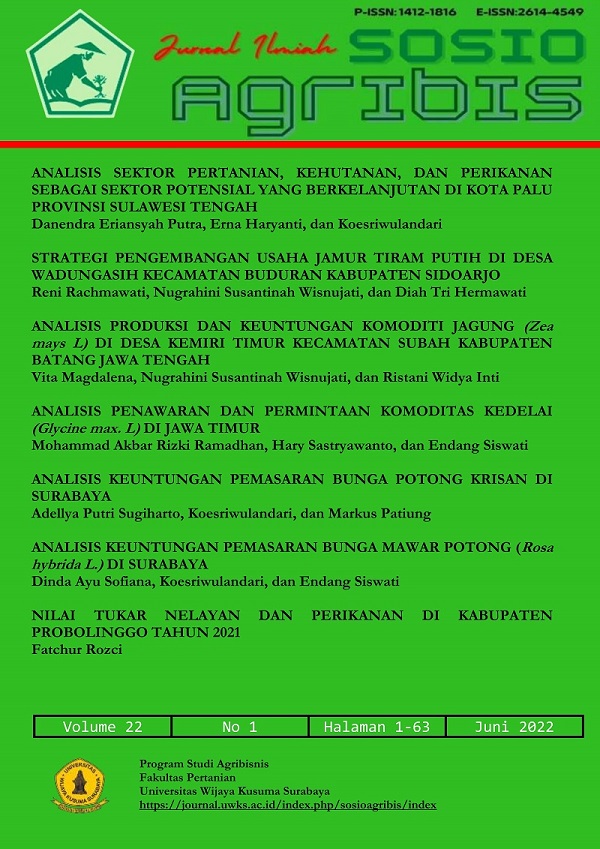Analisis Penawaran dan Permintaan Komoditas Kedelai (Glycine Max L.) di Provinsi Jawa Timur
DOI:
https://doi.org/10.30742/jisa22120221994Abstract
The purpose of this study is to find out the factors that influence the supply and demand of soybeans and predict the supply and demand of soybeans in East Java in the next 10 years. The data used is Secondary data that has been collected by research institutions and published to data users. The results of the analysis on supply show that there are three factors that have a significant influence on soybean supply in East Java, namely land area, domestic soybean prices, and productivity. Meanwhile, other factors, namely the price of corn and the price of imported soybeans, do not affect the soybean supply in East Java. Of the four factors contained in the soybean demand model in East Java, there is one factor that has a significant influence on the demand for East Java soybeans, namely the population. Meanwhile, other factors are domestic soybean prices, imported soybean prices and income levels. The prediction of East Java soybean supply for the next 10 years will decrease every year until 2030 and the prediction of East Java soybean demand for the next 10 years will increase every year.
Keywords: Trend Analysis, Supply and Demand, Soybean, Corn, Land Area
Downloads
Published
Issue
Section
License
- The author retains copyright and grants the journal the right of first publication with the work being simultaneously licensed under the Creative Commons Attribution License which allows others to share the work with acknowledgment of the work's authorship and initial publication in this journal.
- Authors may make additional separate contractual arrangements for the non-exclusive distribution of the published journal version of the work (for example, posting it to an institutional repository or publishing it in a book), with acknowledgment of its initial publication in this journal.
- Authors are permitted and encouraged to post their work online (for example, in institutional repositories or on their websites) before and during the submission process, as it can result in a productive exchange, as well as earlier and larger citations of published work (See The Influence Open Access).

